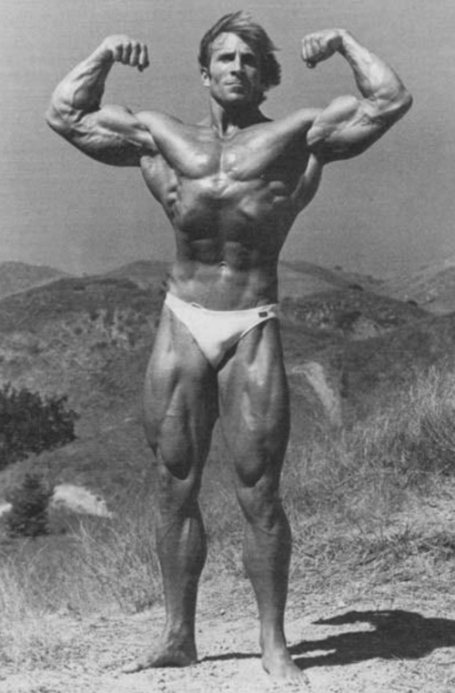Concurrent movements occur when multi-articular muscles, or those that attach to more than one joint, contract while either shortening or lengthening at one joint and lengthening or shortening, respectively, at another joint.

Many compound exercises involve concurrent movements. Pushing, pulling, and squatting all have this form of movement. The multi-articular muscles in these movements maintain their length, generating a low level of constant tension to facilitate motion and to stabilize the joint.
These movements are important for bodybuilding. Done properly, concurrent movements allow you to best isolate single-joint muscles. We will go into more detail by evaluating the implications for these movements.
Implications
- Compound exercises are not enough to develop multi-articular muscles.
The lack of tension is insufficient for their development, yet many assume that compound exercises work the arms and thighs best.
On the underhand pull-up or chin-up, some believe it works the biceps well. This is just not true. While an underhand grip may help the biceps achieve a higher level of tension, since it is not disabled through pronation, it will remain low.
The feeling actually experienced takes place beneath the biceps, with the single-joint elbow flexor called the brachialis. This is the muscle changing length and generating high tension. This elbow flexion also involves the brachioradialis, the largest forearm muscle and another elbow flexor that is single-joint as well.
The bench press fails to develop the long head of the triceps, since the shoulder is flexing or extending while the elbow is extending or flexing. This again maintains most of its tension at a low level.
Squats, even with a low-bar position, will not develop the 3 multi-articular heads of the hamstrings. The squat also fails to work the rectus femoris, so it is not a complete quad movement as many claim. It also fails to work the gastrocnemius of the legs, another multi-articular muscle, instead hitting the mostly underlying soleus.
Another point related to this is that even though compound exercises are best for large muscles, they may not be ideal in rare cases precisely because they do use the smaller single-joint muscles.
Though almost never the case, you may want to perform a dumbbell flye instead of a barbell bench press. This exercise is not as effective for the chest based on the length-tension relationship or a proper strength curve. You would do this only to circumvent growth in the lateral and medial heads of the triceps, perhaps to balance out your physique.
- Concurrent movements focus on single-joint muscles.
Single-joint exercises, such as the arm extension, work all three heads of the triceps well because it allows the change in length necessary for each of them. The long head of the triceps exerts high tension unlike on a bench press. This head can dominate the arm extension though, causing the uni-articular lateral and medial heads to receive less work.
Single-joint exercises and countercurrent movements are therefore best for multi-articular muscles.
Nonetheless, we all know the compound exercises focus on the big muscles. The bench press trains the chest, the squat hits the glutes, and the row or pull-up works mostly the trapezius or lats.
How can we overcome this to work the smaller uni-articular muscles, say the bench press hitting the lateral and medial heads of the triceps, or the squat focusing on the vasti group (vastus medialis, vastus lateralis, vastus intermedius)?
- You need extreme positioning to isolate small single-joint muscles on compound exercises.
You can avoid emphasizing the large muscles by adopting extreme positions. These involve more range of motion for the joint that attaches to the small single-joint muscles. This means close-grip bench pressing for the lateral and medial heads of the triceps and a knee-dominant bodybuilding or hack squat for the vasti group.
The close-grip row and pull-up still has significant shoulder extension, so will focus on the lats versus the elbow flexors. Fortunately, since the biceps wraps around the radius bone of the forearm to disable it when you use a pronated or overhand grip, we can perform a pronated and neutral grip curl (reverse or hammer curl) to hit these single-joint elbow flexors best anyway.
If the chest still dominates with a close-grip bench press on a flat bench, you may need to further remove large muscles. You could do this through say an upright dip.
You also have to be careful not to overdo the extreme position.
A very close-grip for the bench press can irritate the elbows and wrists while also disrupting the strength curve.
Many find the hack squat machine harms their knees, and a bodybuilding squat performed with the feet forward on a Smith machine may be less stressful.
Any sort of extreme positioning can harm the joints. As long as the triceps dominates over the chest or the quadriceps over the glutes, you should choose more moderate positioning.
Concurrent Movements for Bodybuilding
A well-balanced routine already includes plenty of concurrent work, though not as targeted, since compound exercises work best for the large muscles anyway. Though these exercises do focus on the big muscles, they also allow you to adopt medium positions that stress the joints less, reducing wear and tear on your shoulders, elbows, wrists, and knees.
The exercises you choose all depend on your goals. You may find, for example, that the regular medium-grip bench press works the lateral and medial heads of the triceps enough. You can then add an arm extension for addressing the long head while also hitting the other two further.
You could also try including both countercurrent movements and concurrent movements with the more extreme positioning to best isolate each muscle and muscle head.
Consider concurrent movements as yet another tool for controlling your bodybuilding progress.
